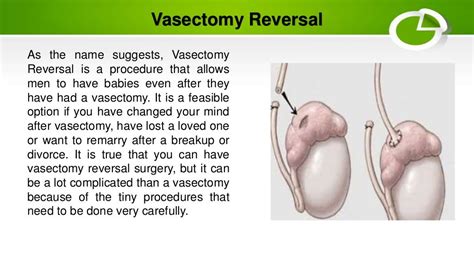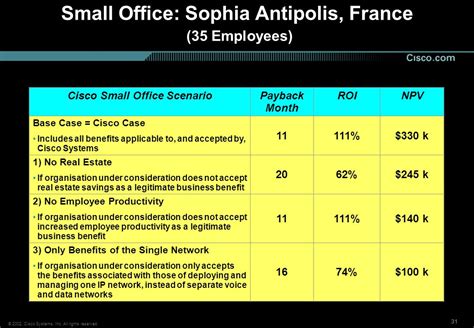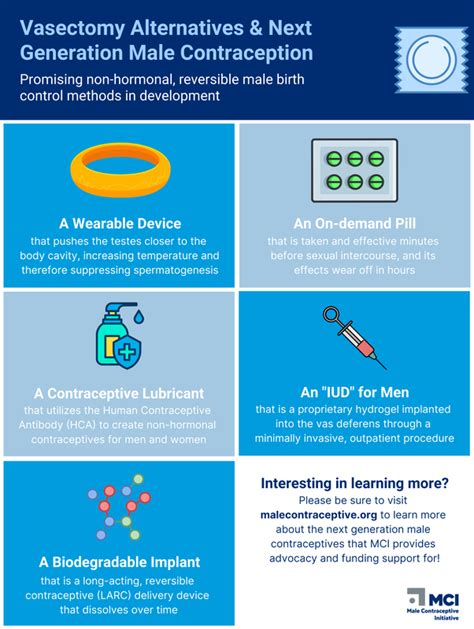Intro
Discover vasectomy reversal possibilities, a minimally invasive procedure to restore fertility, using microsurgical techniques and expert urologists for successful outcomes and increased pregnancy chances.
The decision to undergo a vasectomy is a personal one, often made after careful consideration and discussion with a partner. However, circumstances can change, and some individuals may find themselves wanting to reverse the procedure. Fortunately, vasectomy reversal is a viable option for those seeking to restore their fertility. This procedure has gained significant attention in recent years due to its potential to give men a second chance at fatherhood. The prospect of reversing a vasectomy is not only a medical phenomenon but also an emotional journey for many. As such, understanding the intricacies of the procedure, its success rates, and what to expect is crucial for anyone considering this path.
The human body is incredibly resilient, and the ability to reverse a vasectomy is a testament to medical advancements and the body's capacity for healing. Vasectomy reversal, also known as vasovasostomy, involves surgically reconnecting the vas deferens, the tubes that carry sperm from the testicles to the penis. This procedure is typically performed by a urologist specializing in microsurgery. The success of the reversal depends on various factors, including the time elapsed since the original vasectomy, the age of the patient, and the surgeon's expertise. Despite these variables, many men have successfully fathered children after undergoing a vasectomy reversal, making it a beacon of hope for those looking to expand their families.
The journey to vasectomy reversal begins with a thorough consultation with a healthcare provider. During this initial meeting, the doctor will discuss the patient's medical history, the reasons for seeking a reversal, and the potential outcomes. It's also an opportunity for the patient to ask questions and address any concerns they may have. The decision to proceed with the reversal is a personal one, influenced by a variety of factors including family planning goals, relationship dynamics, and personal health. Understanding the procedure's implications, both physically and emotionally, is essential for making an informed decision.
Vasectomy Reversal Procedure

The vasectomy reversal procedure is a delicate process that requires precision and skill. There are generally two types of reversal surgeries: vasovasostomy and vasoepididymostomy. Vasovasostomy involves directly reconnecting the vas deferens, while vasoepididymostomy connects the vas deferens to the epididymis, the tube behind each testicle that stores and transports sperm. The choice between these two procedures depends on the condition of the vas deferens and the epididymis, which is assessed during the surgery. The operation is typically performed under general anesthesia, ensuring the patient remains comfortable throughout the procedure. Post-operative care involves rest, application of ice to reduce swelling, and avoiding heavy lifting or strenuous activities for a recommended period.
Preparation and Recovery
The preparation for vasectomy reversal involves a series of steps to ensure the patient is ready for the surgery. This includes stopping certain medications that may increase the risk of bleeding, avoiding food and drink for a specified period before the operation, and arranging for someone to drive the patient home after the surgery. Recovery is a critical phase, during which the patient needs to follow the doctor's instructions carefully to minimize complications and promote healing. This may include taking prescribed medications, attending follow-up appointments, and gradually returning to normal activities.Success Rates and Factors Influencing Outcomes

The success of a vasectomy reversal is measured by the return of sperm to the semen, known as patency, and ultimately, the achievement of a pregnancy. Success rates can vary widely depending on several factors, including the time since the vasectomy, the patient's age, and the surgeon's experience. Generally, the sooner the reversal is performed after the vasectomy, the higher the chances of success. The age of the female partner also plays a significant role in the overall success of achieving a pregnancy, as female fertility declines with age. Understanding these factors helps manage expectations and makes the decision-making process more informed.
Emotional and Psychological Aspects
The decision to undergo a vasectomy reversal is not just a medical choice but also an emotional and psychological one. It involves considering personal desires, relationship dynamics, and the potential impact on family and friends. The process can be stressful, and the uncertainty of the outcome can be a source of anxiety. Therefore, it's essential to have a strong support system, including a partner, family, and friends. Seeking counseling or joining support groups can also provide valuable emotional support and help individuals cope with the challenges associated with the procedure.Benefits and Considerations

Vasectomy reversal offers several benefits, most notably the chance to father additional children. For many, this procedure represents a second chance at building their family as desired. However, it's crucial to consider the potential risks and complications, such as infection, fluid buildup, and the possibility that the procedure may not be successful. Weighing these benefits and considerations is vital for making an informed decision that aligns with one's personal and family goals.
Risks and Complications
As with any surgical procedure, vasectomy reversal comes with risks and potential complications. These can include pain, infection, and swelling at the surgery site. In some cases, patients may experience more serious complications, such as a reaction to the anesthesia or chronic pain. It's essential for patients to discuss these risks with their healthcare provider and understand the signs of complications that require immediate medical attention.Alternatives to Vasectomy Reversal

For some individuals, vasectomy reversal may not be the best option due to various reasons such as low success rates or personal preferences. In such cases, alternatives like sperm retrieval and in vitro fertilization (IVF) can be considered. Sperm retrieval involves obtaining sperm directly from the testicles or epididymis, which can then be used in conjunction with IVF to achieve a pregnancy. These alternatives offer hope to individuals and couples facing fertility challenges, providing a range of options to suit different needs and circumstances.
Financial Considerations
The cost of a vasectomy reversal can be significant and is often not covered by insurance, as it is considered an elective procedure. The financial burden can be a considerable factor in the decision-making process. It's essential to discuss costs with the healthcare provider and explore financing options or alternative fertility treatments that may be more affordable. Understanding the financial implications and planning accordingly can help alleviate some of the stress associated with the decision.Conclusion and Future Directions

Vasectomy reversal represents a remarkable blend of medical science and human desire, offering a pathway to parenthood for those who thought that door was closed. As medical technology continues to evolve, it's likely that the success rates and accessibility of vasectomy reversal will improve. For now, it stands as a testament to human resilience and the enduring desire to build and nurture a family. Whether one is considering a vasectomy reversal or simply seeking to understand the process better, it's clear that this procedure has the potential to change lives in profound ways.
Final Thoughts
In reflecting on the journey of vasectomy reversal, it's evident that this procedure encompasses more than just a medical intervention; it's a journey of hope, resilience, and the pursuit of family. As individuals and couples navigate the complexities of fertility and family planning, procedures like vasectomy reversal offer a beacon of possibility. By understanding the intricacies of this procedure, from its benefits and risks to its emotional and psychological implications, those considering vasectomy reversal can make informed decisions that align with their deepest desires and values.What is the success rate of vasectomy reversal?
+The success rate of vasectomy reversal can vary widely depending on factors such as the time since the vasectomy and the patient's age. Generally, the sooner the reversal is performed after the vasectomy, the higher the chances of success.
How long does it take to recover from a vasectomy reversal?
+Recovery from a vasectomy reversal typically involves several weeks of rest and avoiding heavy lifting or strenuous activities. Most men can return to their normal activities within a few weeks, but it may take several months for full recovery.
Are there any alternatives to vasectomy reversal for achieving pregnancy?
+Yes, alternatives to vasectomy reversal include sperm retrieval and in vitro fertilization (IVF). These procedures can be effective options for individuals or couples facing fertility challenges.
As we conclude this exploration of vasectomy reversal, we invite readers to share their thoughts, experiences, and questions. Whether you're considering this procedure or simply looking to understand it better, your engagement is valued. Please feel free to comment, share this article with others who may find it informative, or reach out to healthcare professionals for personalized advice. The journey of vasectomy reversal is unique to each individual, and by supporting one another, we can foster a community of understanding and hope.
